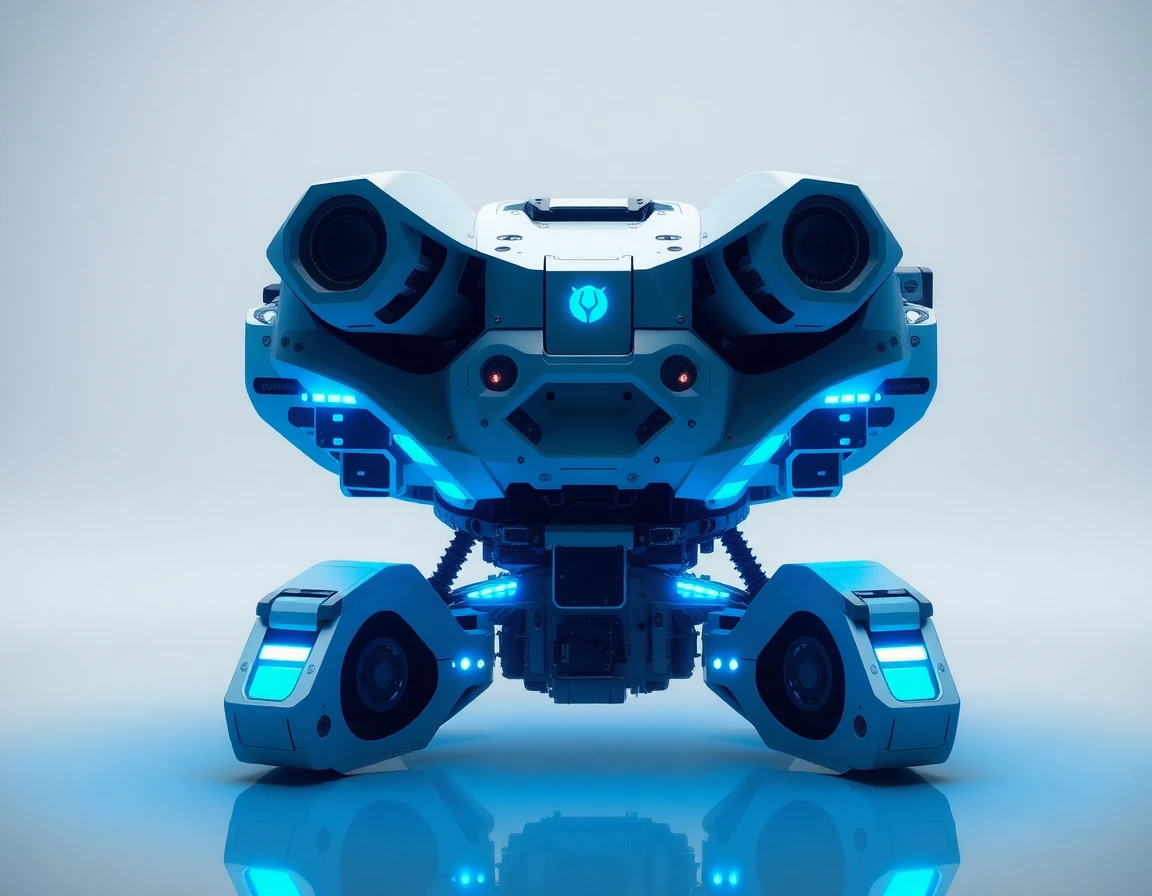In recent years, the aerospace and defense sectors have witnessed remarkable advancements in autonomous defense systems. These technologies are redefining military capabilities, enhancing operational effectiveness, and addressing emerging threats in air, land, and sea environments. From sophisticated drone countermeasures to the integration of autonomous vehicles in logistics, the landscape of defense technology is rapidly evolving.
Autonomous Laser Systems for Drone Neutralization
One of the most significant developments in this realm is the emergence of autonomous laser systems aimed at neutralizing drone threats. Aurelius Systems recently secured $10 million in funding to enhance its laser platform, which autonomously detects and disables hostile drones using directed energy. This technology not only promises to improve airspace defense against unmanned aerial threats but also exemplifies the growing reliance on precision systems in modern warfare. The system leverages advanced sensor modules, including precision accelerometers and high-performance CMOS imaging series, to ensure accurate targeting and engagement.
Pentagon’s Replicator Initiative: Scaling Drone Swarms
In a strategic response to geopolitical challenges, the U.S. Department of Defense (DoD) has initiated the Replicator program, which aims to deploy thousands of lethal drone swarms across multiple operational domains within an ambitious timeline of 18 to 24 months. Although the program has delivered hundreds of uncrewed systems to military personnel so far, it is still below initial targets. The Replicator initiative reflects the DoD’s commitment to countering China’s military buildup in the Indo-Pacific and bolstering U.S. drone dominance. Experts suggest that this rapid scaling of drone production and operational use will reshape battlefield dynamics, particularly in contested environments.
Navy’s Robotic and Autonomous Systems Reorganization
In a bid to enhance its hybrid fleet strategy, the U.S. Navy has undertaken a significant reorganization of its robotic and autonomous systems (RAS) enterprise. Secretary of the Navy John Phelan announced a temporary pause on all RAS-related acquisitions unless specifically approved. This restructuring aims to integrate crewed ships with uncrewed surface and subsurface vehicles, thereby extending operational reach and improving power projection. The move underscores the increasing importance of robotic systems in naval warfare, as they allow for greater flexibility and adaptability in complex maritime environments.
Joby Aviation’s Breakthrough in Autonomous Flight
Joby Aviation has recently made headlines with its successful demonstration of the Superpilot™ autonomous flight technology during a defense exercise over the Pacific Ocean and Hawaii. Integrated into a Cessna Caravan 208, the Superpilot system showcased its capabilities in complex, real-world scenarios, supporting contested logistics missions. This technology marks a pivotal step toward deploying autonomous aircraft for military logistics, particularly for low-volume, high-urgency deliveries. The integration of advanced navigation systems, featuring high-performance MEMS accelerometers, plays a crucial role in ensuring stable and reliable flight operations in challenging conditions.
FAA’s Request for Input on Autonomous Ground Vehicle Systems
On the regulatory front, the Federal Aviation Administration (FAA) is seeking input on autonomous ground vehicle systems (AGVS) for airport operations. Issued on September 5, 2025, the Request for Information (RFI) aims to gather data on key aspects such as sensor integration—including LiDAR, radar, and cameras—obstacle avoidance, cybersecurity measures, and emergency protocols. This initiative signals a growing recognition of the need for regulatory frameworks to govern the safe interaction of autonomous vehicles with aircraft and human-driven vehicles at airports. As the aviation industry embraces technological advancements, the establishment of comprehensive standards will be vital for ensuring safety and efficiency.
Conclusion
The advancements in autonomous defense systems are paving the way for a transformative era in military operations. From autonomous laser platforms capable of neutralizing drone threats to the rapid deployment of drone swarms and the integration of autonomous flight technology in logistics, the defense sector is adapting to meet evolving challenges. As these technologies continue to mature, they promise to enhance operational capabilities and redefine the future of warfare. The ongoing developments emphasize the importance of collaboration between defense technology companies, regulatory bodies, and military organizations to ensure safe and effective implementation of these cutting-edge systems in the field.
References
-
Autonomous Laser Platform Developer Aurelius Systems Raises $10M (www.photonics.com) SAN FRANCISCO, Sept. 4, 2025 — Aurelius Systems, a defense technology company developing autonomous laser system technology to neutralize drone threats, …
-
FAA seeks industry input on autonomous ground vehicle systems for … (www.militaryaerospace.com) - 9/5/2025 FAA seeks industry input on autonomous ground vehicle systems for airports. Sept. 5, 2025. Use cases include self-driving jet bridges …
-
SECNAV Phelan orders major shakeup in Navy’s robotic … (defensescoop.com) - 9/4/2025 SECNAV Phelan orders major shakeup in Navy’s robotic, autonomous systems enterprise. Secretary of the Navy John Phelan issued a new memo …
-
DOD touts ‘successful transition’ for Replicator initiative (defensescoop.com) - 9/3/2025 The Defense Department has remained secretive about Replicator since its inception. By Brandi Vincent. September 3, 2025.
-
Joby Completes Landmark U.S. Defense Exercise with Autonomous … (www.jobyaviation.com) - 9/3/2025 Joby conducted a successful demonstration and validation of its SuperpilotTM autonomous flight technology over the Pacific Ocean and Hawaii.



